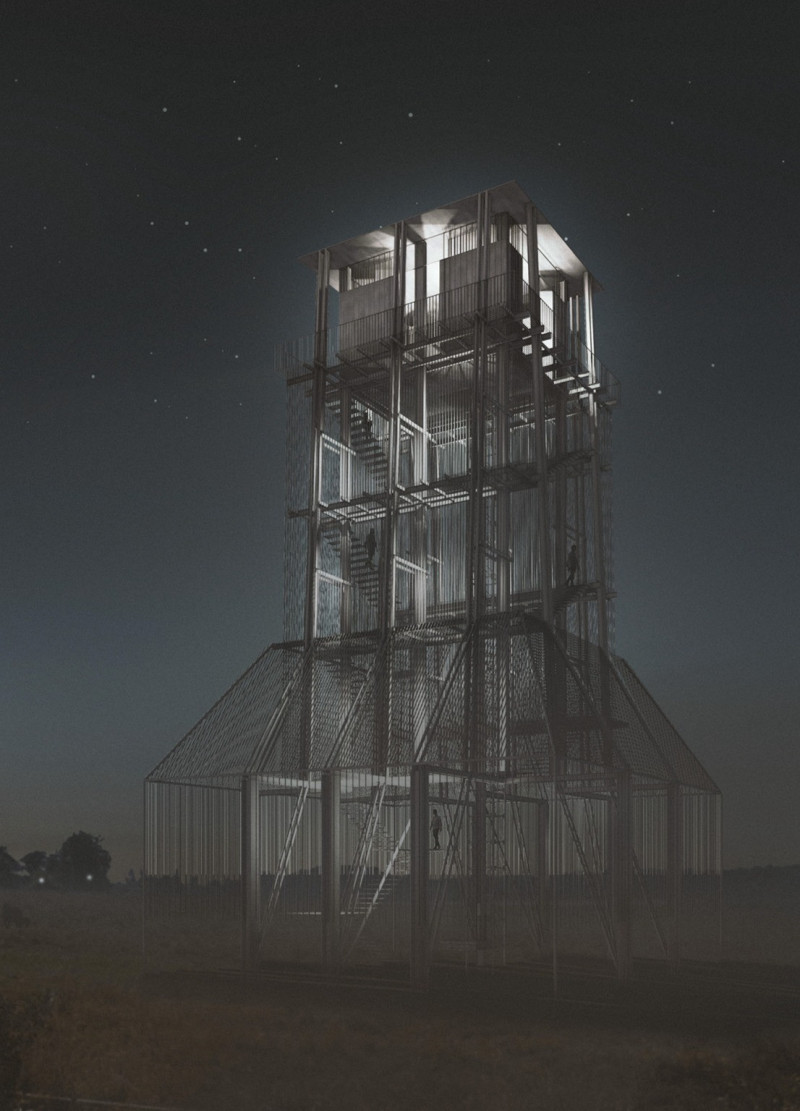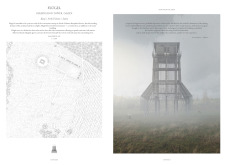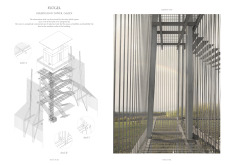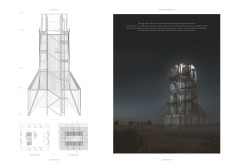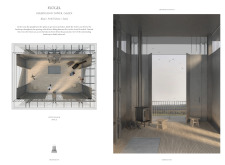5 key facts about this project
Flügel Observation Tower, located in Kurgi within the North Vidzeme Biosphere Reserve of Latvia, provides a thoughtful response to its natural surroundings. This facility supports ecotourism by creating an inviting space that allows visitors to connect with the environment. The design emphasizes providing a refuge for those looking to escape urban life, enhancing experiences in nature for guests.
Design Concept
The name Flügel translates to "wing" in German, symbolizing the structure's connection to the agricultural landscape. This gathering point invites visitors, often arriving on horseback, to engage with the scenery. The design fosters a relationship between people and nature, encouraging meaningful interactions with the surroundings.
Architectural Features
Accessibility is an important aspect of the observation tower, featuring both a staircase and an elevator to reach the observation deck. This consideration allows individuals with different mobility needs to enjoy the space. Inside, the high vaulted ceiling creates a sense of openness, leading to a warm room that offers sweeping views of the landscape. The height enhances visibility, providing an immersive experience for those who visit.
Materiality and Composition
The tower is constructed entirely from metal, which contributes to its stability and durability while also presenting a modern look. Its architectural form is inspired by traditional rural buildings, connecting the design back to the local culture. This integration of contemporary and traditional elements creates a narrative informed by nearby features like the farm, stable, and barn.
Interaction with the Environment
Openings with sliding shutters allow visitors to engage directly with the outdoor landscape. This design choice lets the indoor space transition to an outdoor balcony, offering multiple ways for guests to experience their surroundings. The careful balance between comfortable interior space and open-air exposure encourages reflection and relaxation while highlighting the relationship between the architecture and the natural world.


